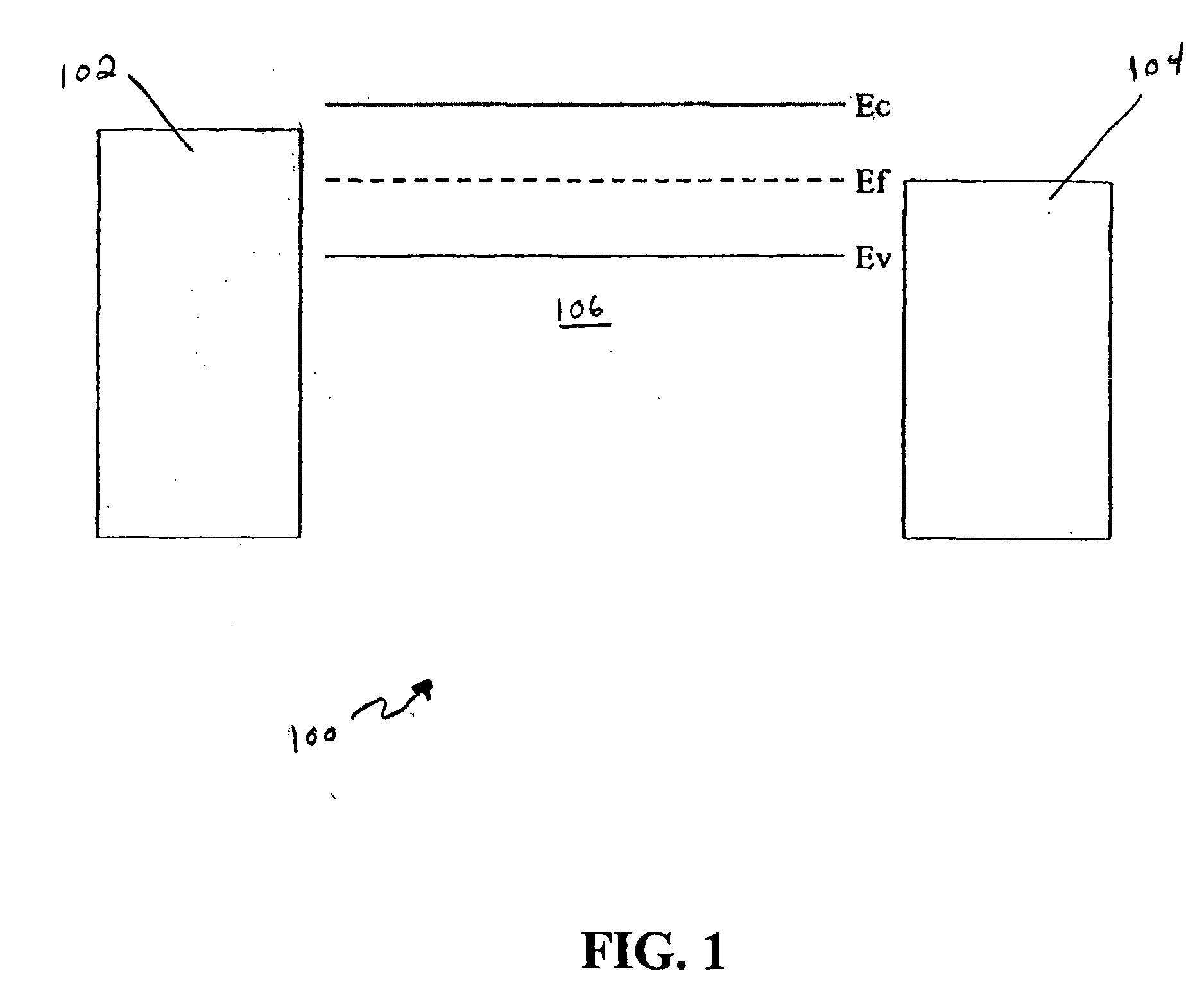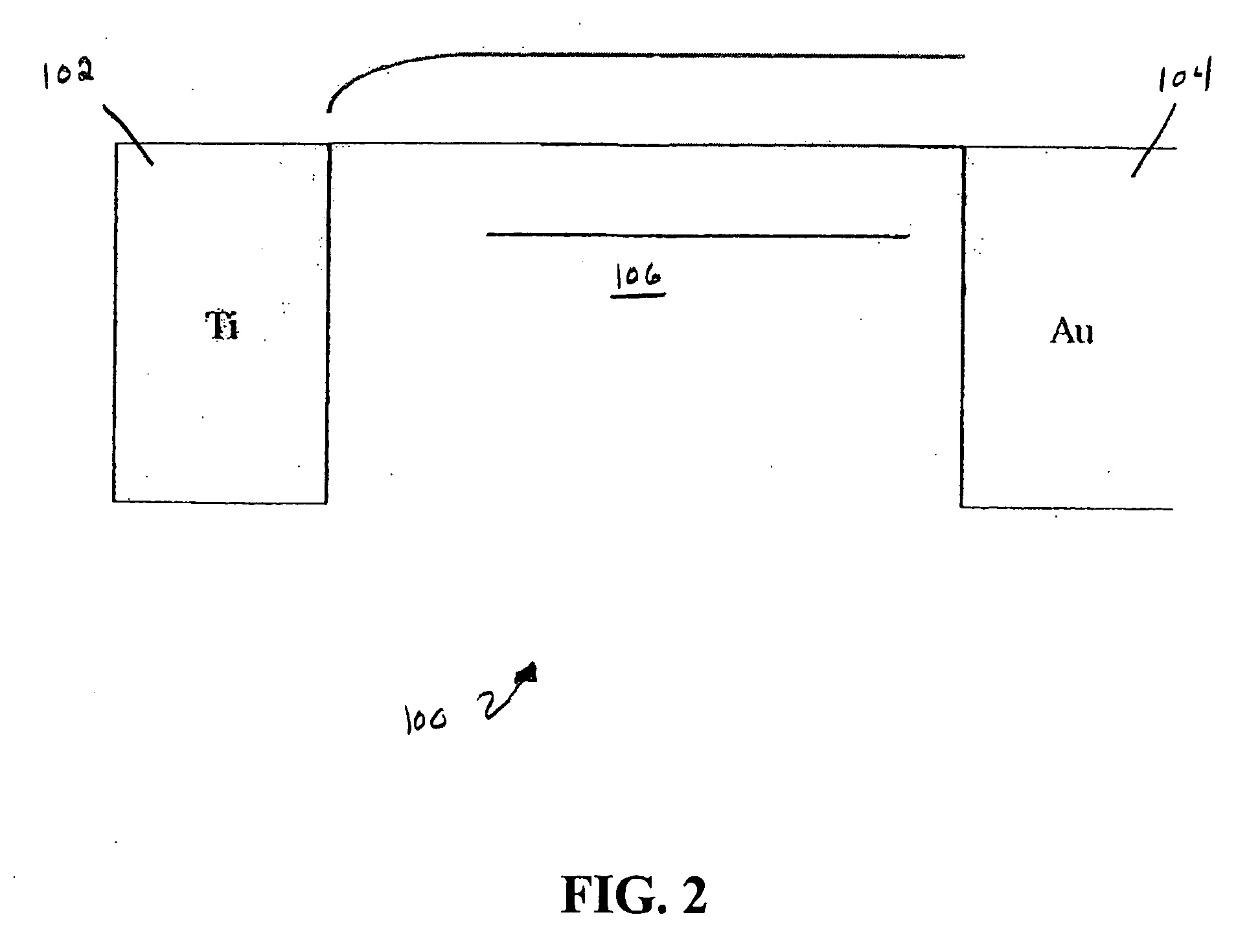Carbon nanotube schottky barrier photovoltaic cell
a photovoltaic cell and carbon nanotube technology, applied in nanoinformatics, basic electric elements, final product manufacturing, etc., can solve the problems of insufficient cell efficiency and cell cost, and insufficient cost per watt for most photovoltaic cells to be competitive with other energy sources
- Summary
- Abstract
- Description
- Claims
- Application Information
AI Technical Summary
Benefits of technology
Problems solved by technology
Method used
Image
Examples
Embodiment Construction
[0022] Carbon nanotube Schottky barrier photovoltaic cells, photodetectors, methods and apparatus for making the photovoltaic cells, and systems powered by the photovoltaic cells are provided in accordance with the present invention.
[0023] In the photovoltaic cells, a plurality of photoconducting carbon nanotubes are attached at one end to one or more first contacts with which the carbon nanotubes form a Schottky barrier or electrons or holes and at the opposing end to one or more second contacts with which the carbon nanotubes either form: 1) a smaller Schottky barrier; 2) no Schottky barrier; or 3) a Schottky barrier for the opposite carriers (i.e., holes or electrons). In these cells, the Schottky barrier (or barriers) provides a built-in electric field that can separate photogenerated electron-hole pairs. Because the opposing ends of each nanotube do not have identical Schottky barriers, the electron-hole pairs are free to escape the nanotube and recombine, generating a photocu...
PUM
 Login to View More
Login to View More Abstract
Description
Claims
Application Information
 Login to View More
Login to View More - Generate Ideas
- Intellectual Property
- Life Sciences
- Materials
- Tech Scout
- Unparalleled Data Quality
- Higher Quality Content
- 60% Fewer Hallucinations
Browse by: Latest US Patents, China's latest patents, Technical Efficacy Thesaurus, Application Domain, Technology Topic, Popular Technical Reports.
© 2025 PatSnap. All rights reserved.Legal|Privacy policy|Modern Slavery Act Transparency Statement|Sitemap|About US| Contact US: help@patsnap.com



